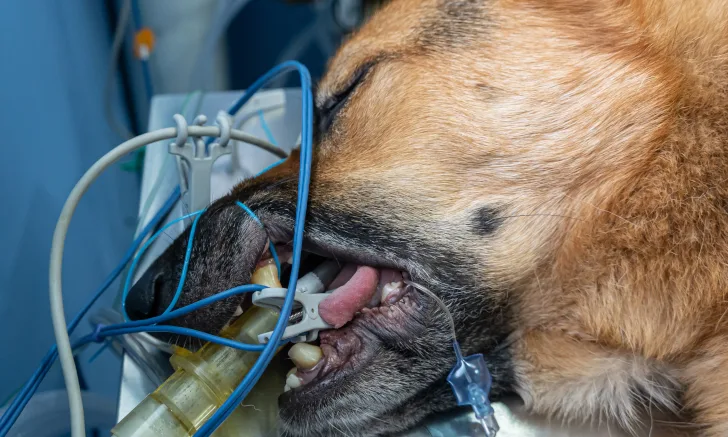
In the Literature
Shoop-Worrall SJW, O’Neill DG, Viscasillas J, Brodbelt DC. Mortality related to general anaesthesia and sedation in dogs under UK primary veterinary care. Vet Anaesth Analg. 2022;49(5):433-442. doi:10.1016/j.vaa.2022.03.006
The Research …
All procedures that require general anesthesia or sedation carry risk for anesthetic- or sedation-related death. In humans, the risk is extremely low (≈0.003%), with the most common causes being anesthetic overdose and anesthetic adverse effects.1,2 Risk factors include higher American Society of Anesthesiologists (ASA) status, poor physical condition, and need for emergency surgery.3 Risk for anesthetic-related death in veterinary species is higher. In a large prospective study, average risk for anesthetic- and sedation-related death in dogs was 0.17% (range, 0.05%-1.33% depending on physical health status).4 The most common cause of death was cardiovascular or respiratory collapse, followed by unknown cause, and risk factors included geriatric age, higher ASA status, sickness and debilitation, and emergency surgery.4
This case-control study estimated the risk and determined risk factors for anesthetic- and sedation-related death in dogs for all procedures and for neuter-specific procedures in primary care clinics in the United Kingdom. An electronic patient record surveillance database was used to identify dogs (n = 157,318) that had undergone ≥1 general anesthesia or sedation procedure in a 3-year period.
Anesthetic- or sedation-related death was defined as death within 48 hours or 2 weeks after the procedure in which an anesthetic agent could not be excluded as a factor. Overall risk for anesthetic- and sedation-related death was 0.10% within 48 hours and 0.14% within 2 weeks. For neuter-specific procedures, risk was 0.006% within 48 hours and 0.009% within 2 weeks. The majority of dogs died during the perianesthetic maintenance phase, followed by the postoperative recovery phase. The most common cause of death was euthanasia due to deterioration in health, followed by cardiorespiratory failure and unknown cause. Risk factors included geriatric age, dolichocephalic breed, higher ASA status, emergency surgery, and dental procedures. Specific breeds (ie, West Highland white terriers, German shepherd dogs, rottweilers) had increased risk; cocker spaniels had decreased risk.
Based on study results, anesthetic- and sedation-related death in veterinary patients has decreased, likely due to increased awareness and more vigilant monitoring; however, the risk is still elevated compared with human medicine. This may be due to differences in anesthesia standards and clinical practice, level of personnel training, available equipment, and patient communication. Risk factors have remained similar, with the exception of the additional finding that specific breeds can have increased or decreased risk. Cardiovascular and respiratory failure remains a common cause of death, reinforcing the importance of appropriate monitoring and ensuring a patent airway during and after anesthesia. Close monitoring throughout sedation, anesthesia, and recovery is critical for minimizing risks and complications.
… The Takeaways
Key pearls to put into practice:
Overall risk for anesthetic- and sedation-related death in dogs has decreased over time.
Factors increasing the likelihood of anesthetic- and sedation-related death include geriatric age, higher ASA status, breed, and need for emergency surgery.
Appropriate cardiovascular and respiratory monitoring should be performed during the preanesthetic, perianesthetic, and recovery phases.
You are reading 2-Minute Takeaways, a research summary resource presented by Clinician’s Brief. Clinician’s Brief does not conduct primary research.